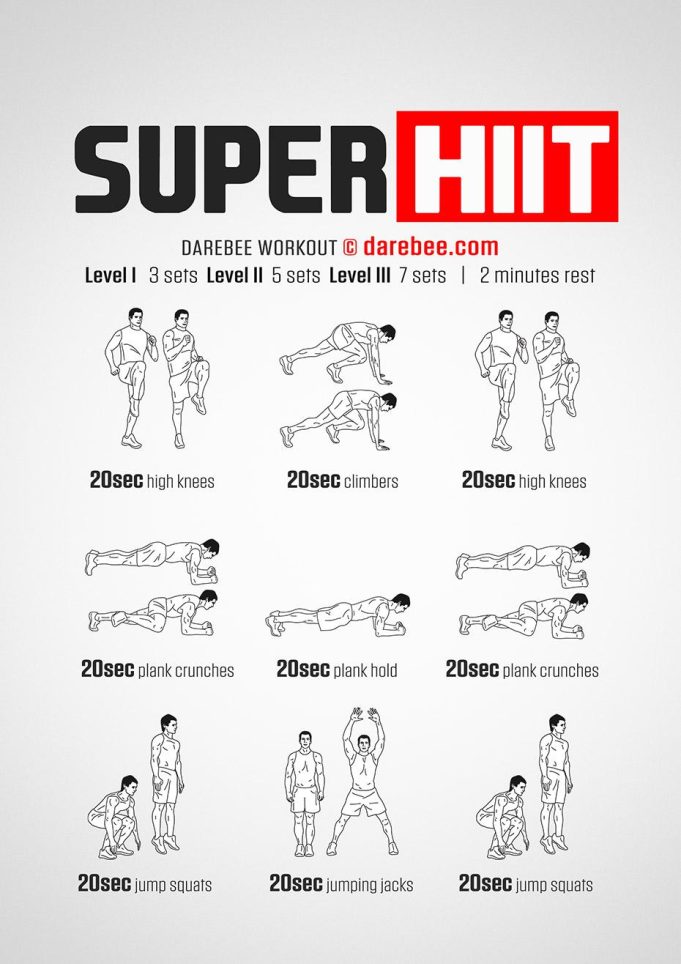In a world where time is the ultimate luxury, finding efficient ways to stay fit and healthy is more crucial than ever. Enter High-Intensity Interval Training, or HIIT, the workout phenomenon that promises to revolutionize your fitness routine by helping you burn more calories in less time. Imagine a workout that fits seamlessly into your busy schedule, yet delivers results that rival hours spent in the gym. This guide delves into the science and strategy behind HIIT, offering insights and tips to help you harness its full potential. Whether you’re a seasoned athlete or a fitness novice, discover how HIIT can transform the way you approach exercise, making every minute count in your journey towards better health.
Understanding the Science Behind HIIT
High-Intensity Interval Training, or HIIT, is more than just a fitness trend—it’s a scientifically-backed workout method that leverages the body’s natural energy systems for maximum efficiency. The essence of HIIT lies in alternating between intense bursts of activity and fixed periods of less-intense exercise or rest. This approach not only pushes your cardiovascular system to its limits but also engages multiple muscle groups, leading to a phenomenon known as the “afterburn effect.” This effect, scientifically termed excess post-exercise oxygen consumption (EPOC), means your body continues to burn calories even after you’ve completed your workout.
- Time-Efficiency: By condensing the workout into shorter, high-energy intervals, HIIT allows you to achieve significant results in a fraction of the time compared to traditional exercise routines.
- Metabolic Boost: The intense nature of the workout boosts your metabolism, aiding in faster fat loss and muscle gain.
- Adaptability: HIIT can be customized to suit all fitness levels, whether you’re a beginner or an elite athlete, making it accessible and versatile.
Embracing HIIT not only helps in enhancing aerobic and anaerobic fitness but also improves insulin sensitivity, reduces blood pressure, and promotes heart health. By understanding the science behind this powerful workout method, you can tailor your fitness routine to harness its full potential, ensuring each session is both effective and invigorating.

Maximizing Efficiency: Crafting Your Perfect HIIT Routine
To unlock the full potential of High-Intensity Interval Training, it’s crucial to design a routine that aligns with your fitness goals and schedule. Start by selecting exercises that target multiple muscle groups to ensure a comprehensive workout. Incorporate movements such as burpees, jump squats, and mountain climbers to maximize calorie burn. Variety is key; mix up your exercises regularly to prevent boredom and keep your body challenged.
- Time Management: Aim for a total workout duration of 20-30 minutes, balancing high-intensity bursts with short recovery periods.
- Intensity Levels: Adjust the intensity based on your fitness level. Beginners might start with a 1:2 ratio of work to rest, while advanced athletes could aim for a 2:1 ratio.
- Recovery: Incorporate active recovery periods to maintain momentum and prevent muscle fatigue.
- Progress Tracking: Keep track of your performance and gradually increase the intensity as your fitness improves.
By customizing your HIIT routine with these elements, you’ll be on your way to achieving optimal efficiency, ensuring every second of your workout counts. Remember, the goal is to push your limits while maintaining proper form to avoid injury.

Common Mistakes and How to Avoid Them in HIIT
HIIT, while effective, can be tricky if approached incorrectly. One frequent error is overtraining. Enthusiasm can lead to doing HIIT sessions every day, but your body needs time to recover. To avoid this, aim for 2-3 sessions per week and mix in other forms of exercise like yoga or strength training. This not only helps in recovery but also in maintaining a balanced fitness routine.
Another common mistake is neglecting proper form. With HIIT’s fast-paced nature, it’s easy to sacrifice form for speed, increasing the risk of injury. To prevent this, focus on technique over speed, especially when starting. Consider these tips:
- Begin with simpler exercises and progress as your form improves.
- Use a mirror or record yourself to check your form.
- If possible, work with a trainer to ensure correct technique.

Balancing Intensity and Recovery for Optimal Results
In the realm of HIIT workouts, striking the right balance between intensity and recovery is crucial to maximizing results and preventing burnout. The intense nature of these workouts can push your body to its limits, but without adequate recovery, you risk overtraining and injury. Understanding the fine line between pushing hard and knowing when to rest is essential for achieving optimal performance and sustainable progress.
- Listen to Your Body: Pay attention to signs of fatigue or soreness. It’s important to distinguish between pushing through discomfort and recognizing when your body needs rest.
- Structured Rest Intervals: Incorporate planned rest periods within your HIIT sessions. This can mean a few seconds of rest between exercises or dedicated rest days throughout the week.
- Active Recovery: Engage in light activities like walking, stretching, or yoga on rest days to promote blood flow and muscle recovery.
- Nutrition and Hydration: Fuel your body with balanced meals and stay hydrated to support muscle repair and overall recovery.
By prioritizing recovery alongside intensity, you create a balanced workout regimen that not only enhances performance but also promotes long-term fitness and well-being. Remember, rest is not a sign of weakness, but a strategic component of a successful HIIT routine.































